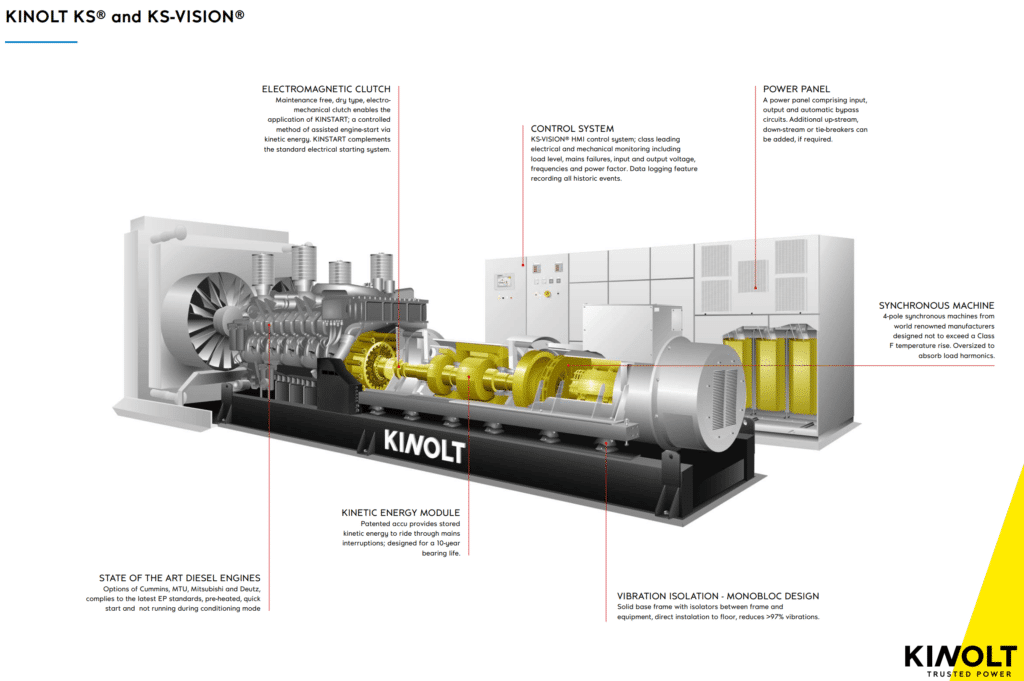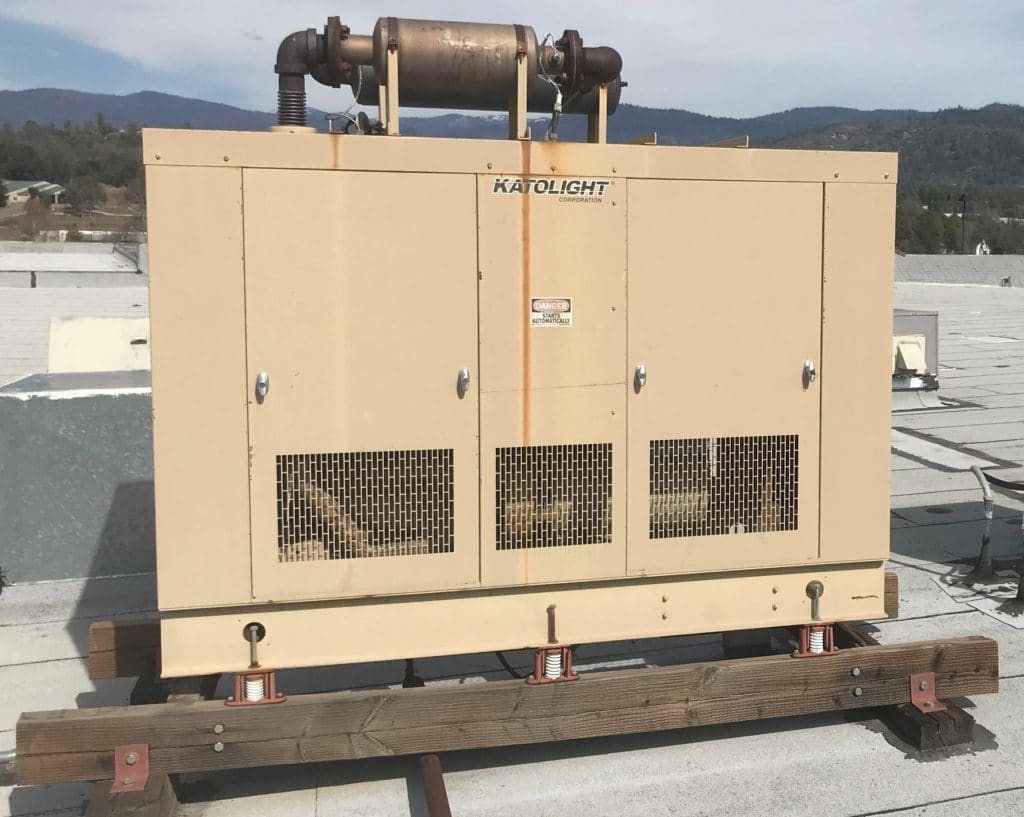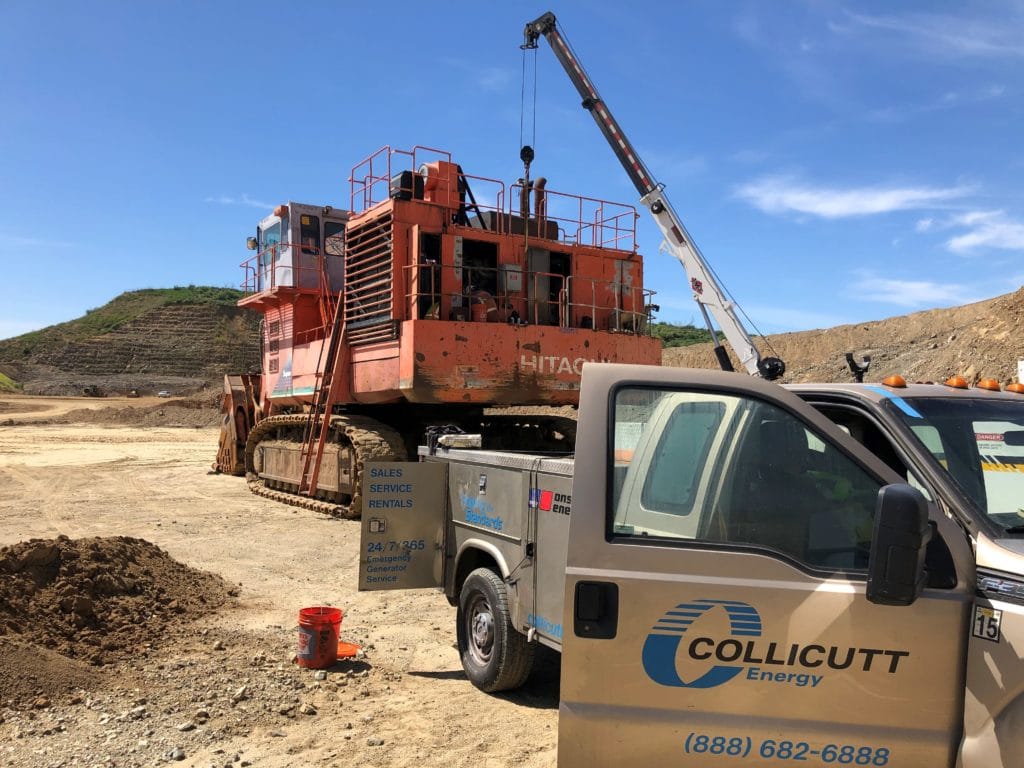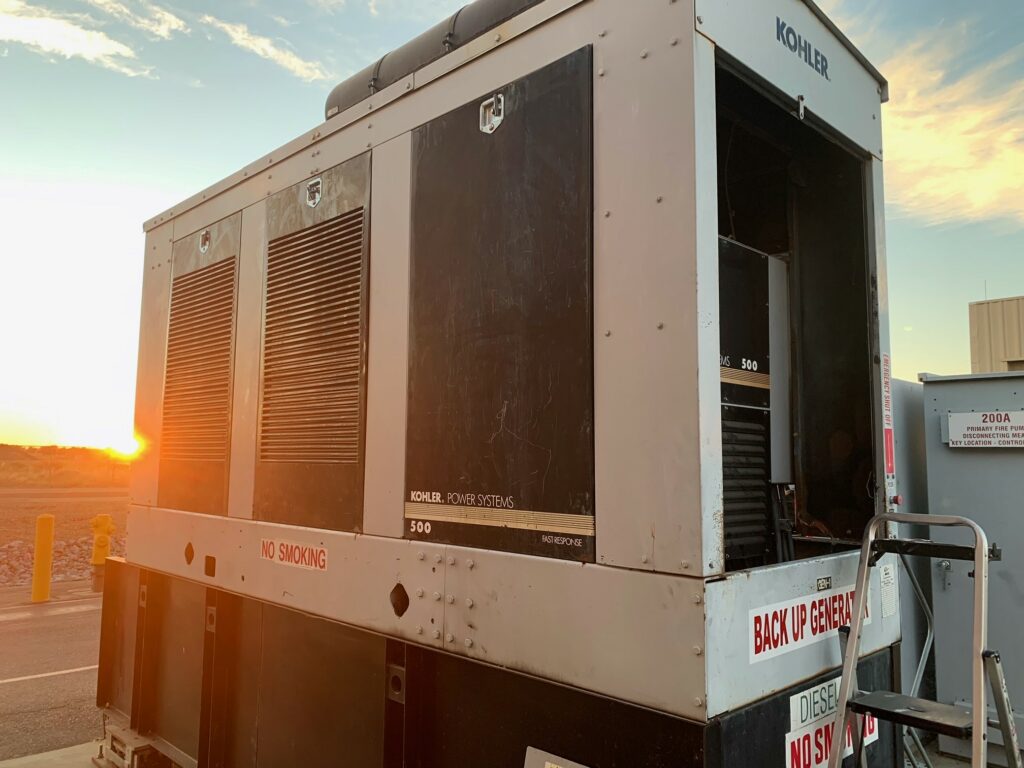D-UPS stands for Dynamic Uninterruptible Power Supply. It can also be referred to as a dynamic rotary uninterruptible power supply (DRUPS) or as a flywheel energy storage power system.
So what is it and what does it do?
Many data centers, hospitals, and other industries that depend on stable electric power have back up emergency generators for when the power grid fails as they simply cannot tolerate a power failure. To complicate things further, many of these industries cannot tolerate a power source that falls outside a narrow performance tolerance.
The default solution to this situation has been to power these critical applications through an Uninterruptible Power System or UPS that is battery based. Basically, utility power runs a battery charging system which charges a large battery bank. The battery bank then powers the critical loads by converting its DC power to highly stable AC power using a DC to AC inverter.
Although these systems have many advantages and have a proven track record in some industries, they do have many shortcomings, including the need for massive battery banks capable of storing enough power to last during an extended power grid failure.
The Solution
The D-UPS eliminates the need for costly and finicky battery banks while still providing a highly dependable and stable power supply for critical loads. Basically, a D-UPS is a combination of an electric motor (which also doubles as a generator), a flywheel, a diesel engine, and a reactor (or choke coil).
A D-UPS system depicted in the diagram below.
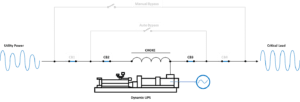
Essentially, utility power is fed into the D-UPS system. It powers an electric motor which spins a large electro-mechanical flywheel. This flywheel stores kinetic energy. The electric motor, in conjunction with a choke coil, works as an active filter and removes power quality problems from the utility power (e.g., harmonics, RFI, frequency variations, etc.).
When the utility power fails, the stored kinetic energy in the flywheel is released and powers the electric motor which now becomes a generator. This generator now provides uninterrupted power to the critical load. At the same time, the diesel engine fires up and, within 2 to 10 seconds, takes over from the flywheel to drive the generator providing sustained, uninterrupted, stable power for the critical systems downstream.
Take Action!
If you are involved in the construction of a new facility that requires high quality, uninterruptible power or if you looking at upgrading your existing back up power systems it is worth considering a D-UPS system.
Collicutt is able to work with you in doing the evaluation and we are able to provide the Kinolt D-UPS system through our association with MTU. If the evaluation determines that a static UPS is required, we can work with you to provide the backup generators for this system.
We currently maintain over 360MW of power generation equipment for data centers in California and many of these are D-UPS systems from various manufacturers.
If you have questions about your existing power generation system or would like to inquire about a new system, give us a call. We are always glad to help!

